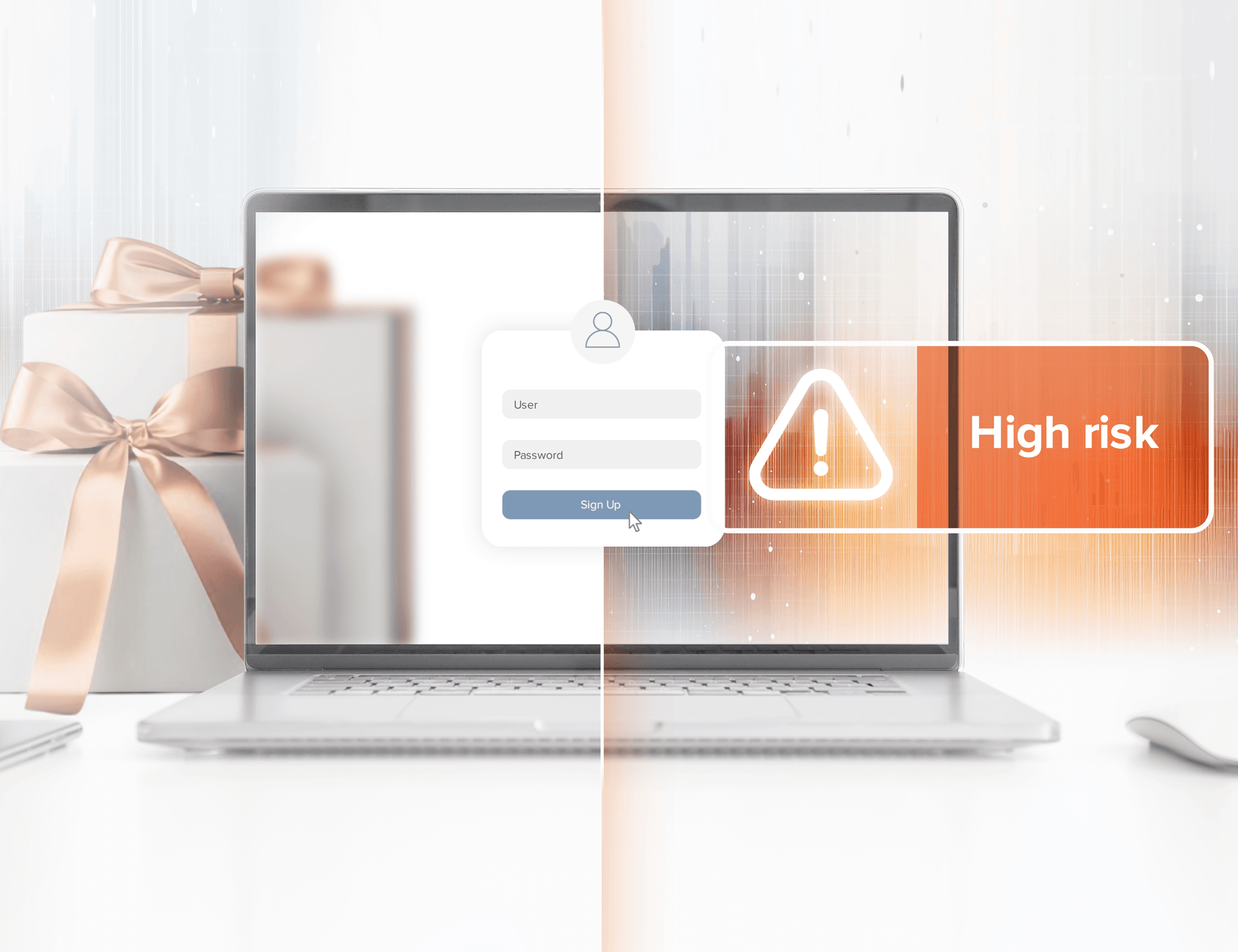Seasonal Fraud Pressure: How Financial Platforms Should Prepare for Peak Risk Periods


The holiday season acts as a high-pressure stress test for BNPL and e-commerce fraud — a moment when traffic spikes faster than most risk engines can adapt, revealing subtle patterns that routine monitoring rarely captures. For businesses, December is traditionally a time to summarize results and set long-term plans. For Risk teams, it is the opposite: a period of intensified monitoring and heightened alert.
As transaction flows intensify, noise increases across all layers of digital interaction. Systems that rely solely on behavioral or transactional analysis begin to lose resolution. Stable device-level signals add the necessary structural context and support more robust fraud prevention.
The number of online fraud attacks usually rises sharply before the holidays, along with consumers’ increased demand for shopping and, consequently, for additional credit. According to JuicyScore’s experience, during this period the volume of applications grows by at least 2.5–3 times.
However the truth is that seasonal “scheduled scammers” typically lack sophisticated technological skills, and many companies manage to stop them at the stage of standard initial online application checks.
Fraudsters do not treat every industry equally. They tend to select specific sectors depending on the time of year and on where transactional activity is peaking. For example, during the festive and holiday season, online commerce experiences a surge in purchases, while digital lenders face increased volumes of BNPL applications and credit-line requests. At the same time, fraudsters routinely probe different businesses to identify weak points in their risk controls — and they quickly concentrate attacks wherever they find vulnerabilities.
Companies should adopt a more conservative approach to evaluating new applications, with stricter policies and rules — which, in our experience, prove to be highly effective and can protect your business from potential financial losses during this period.
Online companies should pay close attention to applications containing high-risk markers — attempts to manipulate the device or internet connection, as well as any suspicious user behaviour. Such measures make it possible to filter out applications submitted from devices using emulators or randomizers and to identify the network infrastructure of professional fraudsters.
In digital lending, this also helps reduce the share of overly active borrowers who repeatedly apply for multiple loans while manipulating application data (including synthetic identity fraud) and identity theft — using the personal information of real individuals, sometimes even people they know).
Online companies should take a more conservative approach to evaluating frequency-based characteristics.
This includes revisiting thresholds for repeated actions, checking whether the velocity of interactions aligns with normal human behaviour, and distinguishing organic customer activity from artificially inflated patterns. A more cautious interpretation of frequency signals reduces the risk of allowing automated schemes, bot-driven scenarios, or coordinated fraud rings that disguise their activity as “typical” user flow.
Many companies fear a potential decline in profits if they filter out “good” customers together with online scammers. However, in such cases, a more precise tailoring of the financial product to the end user can be highly beneficial. By offering special conditions and better addressing the needs of loyal customers, a company can mitigate this effect and reduce losses caused by online fraud.
Seasonal peaks always bring a shift in the fraud landscape. Higher volumes, shorter decision windows and relaxed customer thresholds create conditions in which several recurring schemes gain momentum.
Compromised credentials, reused passwords and old session tokens become an easy entry point when platforms experience traffic spikes. Attackers exploit the rush, knowing that many users rely on autofill and do not notice suspicious logins — a classic account takeover pattern.
Demand for fast credit increases sharply, and with it — attempts to submit applications using borrowed or fully fabricated personal data. Most of these identities are short-lived and designed to survive only one transaction cycle, which makes digital lending fraud and BNPL fraud particularly exposed.
After large sales events, pressure on support teams grows. This window is routinely used for false refund claims, duplicate return requests and deliberate misreporting of delivery issues.
A predictable wave that appears weeks after the holiday rush: customers receiving goods, then disputing the transaction. For BNPL flows, this may present itself as “non-recognised instalment” disputes.
Holiday incentives spur attempts to register multiple accounts from the same environment. Device farms, randomised emails and VPN chains are used to appear as independent users — typical multi-account fraud patterns.
Digital lenders see a clear increase in applicants submitting multiple requests within short intervals — often adjusting data between attempts. Many of these patterns blend with normal seasonal demand unless frequency signals are analysed conservatively.
Emulators, spoofed system parameters, residential proxy networks and layered VPNs become more common as fraudsters try to disguise coordinated activity as organic seasonal traffic.
Fraud doesn’t stop when the discounts end. The next two to four weeks bring late chargebacks, refund abuse, sleeper-fraud activations, and identity-theft claims. Mark confirmed cases early, refresh your blocklists, correlate events across channels, and feed those labels back into your fraud risk management workflows while the memory of the season is still fresh.
Then — review what actually worked. Which controls caught fraud in real time? Which ones merely slowed everyone down? Which signals helped your analysts spot coordinated patterns before they turned into losses? And, just as importantly, where did blind spots remain — devices that looked “normal,” connections that blended in, borrowers whose applications passed every traditional check?
This is usually the moment when teams realise that behavioural tweaks and KYC patches aren’t enough. High-temperature periods expose structural gaps: missing device context, weak recognition of manipulated environments, and poor visibility into cross-application reuse. That’s where device intelligence matters. Clean, privacy-first device-level signals let you see manipulation attempts that users never declare, detect infrastructure shared by professional fraud rings, and separate genuine repeat customers from scripted high-velocity traffic. Seasonal peaks become manageable when you don’t just evaluate the application — you understand the environment it was made from.
When traffic and risk both spike, device intelligence becomes the quiet stabilizer. It helps see the real customer behind multiple accounts, detect emulators or automation, and link activity without storing or sharing personal data.
For banks and BNPL companies, this is often the line between a busy but safe season — and a costly one.
At JuicyScore, we support financial institutions across emerging markets that face exactly these seasonal challenges.
Our device intelligence and behavioral risk data help detect anomalies in real time — without intrusive tracking or personal information.
If your team is reviewing fraud-prevention measures ahead of the holiday season, we can provide industry benchmarks and case studies based on real deployments.
Request a free demo — and see how device-level signals can protect your onboarding and credit flows during peak season: https://juicyscore.ai/en/book-a-demo
To see how device intelligence strengthens BNPL risk management in practice, explore our BNPL case study, where a major provider shares the results achieved with JuicyScore.

JuicyScore API 17 introduces 17 new variables, improved indexes, and a faster infrastructure to enhance fraud prevention, risk analysis, and client experience.

Modern technologies are becoming more robust, and security measures more sophisticated. But there’s one vulnerability that can’t be patched — human trust.

Modern web applications use dynamic interfaces based on the DOM (Document Object Model).
Get a live session with our specialist who will show how your business can detect fraud attempts in real time.
Learn how unique device fingerprints help you link returning users and separate real customers from fraudsters.
Get insights into the main fraud tactics targeting your market — and see how to block them.
Phone:+971 50 371 9151
Email:sales@juicyscore.ai
Our dedicated experts will reach out to you promptly